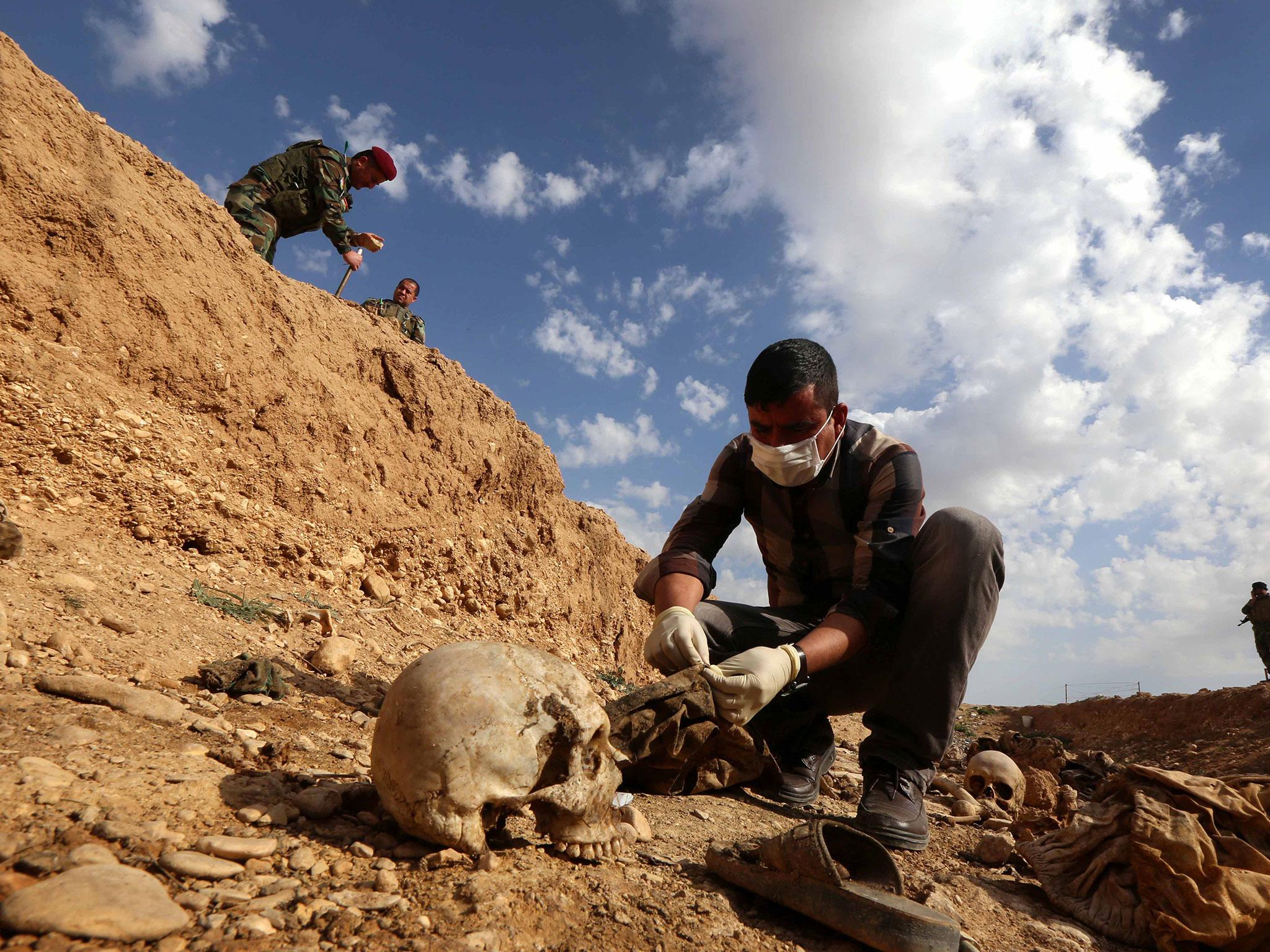How Yazidi refugees are using drones and helium balloons to collect evidence of genocide
Documenting the genocide of the Yazidi people in northern Iraq could allow charges to be brought against members of Isis in the future

The British installation at the London Design Biennale is an international project that demonstrates how victims of human rights violations around the world can gather proof of their own experiences.
Plastic bottles, digital cameras and kites, just some of the low-cost items in the exhibition, are being used in the Sinjar region of northern Iraq to gather the remaining evidence of Isis’s 2014 treatment of the Yazidi ethnic minority, treatment that survivors and their supporters have called genocide and hope to prosecute in the international courts. Not only do they say thousands were killed by the terrorist group and thousands more displaced, but Yazidi cultural and religious heritage sites were destroyed and their temples were used as mass graves.
Four years later, the region is still dangerous, littered with landmines and booby-traps left by the militants as they retreated. So when Yazda, a global rights organisation established by the Yazidi diaspora, sought help in supplementing their documentation efforts from Forensic Architecture, an independent research agency based at Goldsmiths, University of London, its team of architects, photographers, software developers, lawyers and archaeologists adapted their investigative methods to provide ways for Yazidis to gather video and data without entering the most hazardous areas.
“The material facts are fading away,” says Ariel Caine, a researcher at Forensic Architecture and the project’s coordinator, “and there’s a race against time to capture what is still there and capture it in a way that it will be useful for future prosecution.”
Forensic Architecture, founded in 2010 by architect Eyal Weizman, is one of four finalists for the 2018 Turner Prize, Britain’s prestigious contemporary art award, which will be presented in December. The finalist announcement says the jury “praised Forensic Architecture for developing highly innovative methods for sourcing and visualising evidence relating to human-rights abuses around the world, used in courts of law as well as exhibitions of art and architecture,” including one investigation into a racially motivated murder in Germany.
For the Yazidi project, Forensic Architecture staff members went to Turkey to train refugees (many of whom are in camps in several countries) to take GPS measurements. They also showed them how to use rubber bands to suspend cameras inside clear plastic bottles, then attach the units to helium balloons, kites or drones to get aerial images from multiple perspectives of attack sites and mass graves.
“Buildings are the collateral damage of most conflict today, just like people are,” says Weizman. “Architecture can provide a unique and potent perspective on the unfolding of a conflict.” He likens the agency’s methods to being “an archaeologist of the present”.
In London, the images are fed into photogrammetry software to create high-resolution 3D models and maps that can be combined with survivors’ testimonies, historic and satellite images, and video from activists’ and survivors’ phones to document what took place. “Yazda provides the testimonies, the interviews, the direct contact with the ground and we provide the knowledge, the documentary techniques and the management of multiple types of different media,” says Caine.
Christopher Turner, the Biennale’s artistic director and the keeper of design, architecture and digital at the Victoria and Albert Museum, compared Forensic Architecture’s work to Serial, the Peabody Award-winning investigative podcast.
“Through great diligence and time spent, they unpick an event and illuminate it,” Turner says. “They want to highlight issues of social injustice that are scarred into the ruins of buildings.”
He declined to disclose the cost of the Yazidi project, which is funded by the V&A, British Council, Arts Council England and Art Jameel.
Natalie Kane, co-curator of the Biennale exhibition and the V&A’s curator of digital design, says she hoped, along with gathering evidence for the Yazidis and highlighting their plight, the exhibition would demonstrate how such methods could be used by other victims of state violence and human rights abuse.
“The most exciting thing for us is that it puts power in the hands of the individual and the community,” she says, “and can be used in London, Turkey or anywhere in the world.”
© New York Times
Join our commenting forum
Join thought-provoking conversations, follow other Independent readers and see their replies
Comments
Bookmark popover
Removed from bookmarks